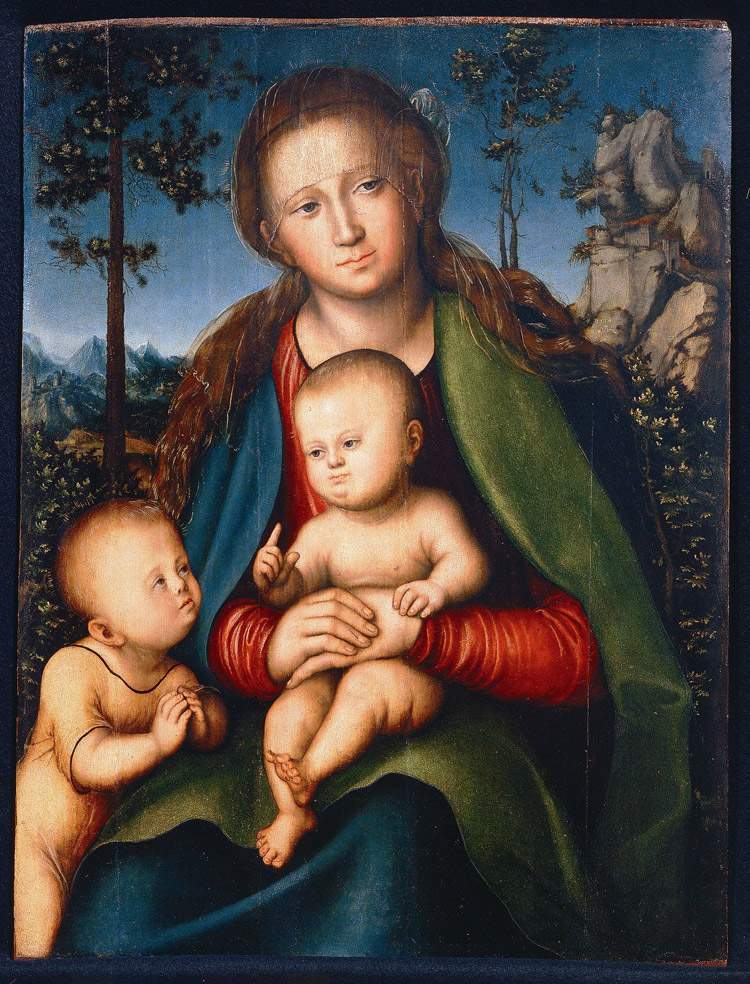500 years after Luther's 95 Theses, an exhibition on the Reformation at the Uffizi between Cranach and Bronzino
Five hundred years after an event that kicked off a season that shook Europe, offered the posting at the Schlosskirche in Wittemberg, Germany, by Martin Luther (Eisleben, 1483 - 1546) of the Ninety-Five Theses against indulgences and the authority of the pope, the Uffizi Gallery recalls what happened on Oct. 31, 1517, with an exhibition of works on Lutheran subjects, set up in the Sala Detti. The exhibition, entitled The Faces of the Reformation. Luther and Cranach in the Medici Collections, runs from Oct. 31, 2017 to Jan. 7, 2018, and displays portraits of Martin Luther and Philip Melanchthon, the two theologians who promoted the Protestant Reformation, that of Catherine von Bora, Luther’s wife, as well as portraits of Frederick III the Wise and John of Saxony, political supporters of the Reformation. These are a group of paintings that came out of the workshop of Lucas Cranach the Elder (Kronach, 1472 - Weimar, 1553), to whom the role of Reformation painter fell.
The above portraits are joined by other important works: the diptych of Adam and Eve, one of Cranach’s major masterpieces, and a Madonna and Child with St. John, also by the German artist. All of the paintings come from the Uffizi collections, and the exhibition is also an opportunity to explore the relationship between Medici collecting and Reformed instances: the works of Cranach, who was a friend of Luther and court painter to Frederick III, circulated and became popular as manifestos of the ideology of the Protestant Reformation.
Again, the exhibition will feature engravings that were circulated almost as illustrations of Reformed sacred texts, some of which Cranach himself published as a publisher. On display for the first time are three series of engravings depicting the Passion of Christ, the apostles and the martyrs of the apostles. These are engravings in which Cranach departs from Dürer’s lesson by creating original works on the same themes addressed by his great compatriot (an example is the Penance of St. John Chrysostom). The public will then be able to see satirical prints against the leadership of the Church of Rome. There will also be no shortage of portraits of Florentine intellectuals who were investigated for their interest in the Lutheran Reformation: the portrait of Pietro Carnesecchi, by Domenico Puligo (Domenico di Bartolomeo, Florence, 1492 - 1527), and the portrait of Bartolomeo Panciatichi, painted by Bronzino (Agnolo di Cosimo, Florence 1503 - 1572).
“The Luther exhibition,” explains Eike Schmidt, director of the Uffizi Gallery, “is the first exhibition here at the Uffizi on this theme. It documents the openness of the Medici mind in collecting even masterpieces of German Lutheran painting, starting with portraits of Luther and his wife, and of the other great Lutheran theologian, Melanchthon, and moreover it documents the criterion of quality that was fundamental to the Medici. We also have very important woodcuts by Cranach, the court painter of Lutheranism, bearing translations from Greek and Latin into German. These are all materials collected here in Florence by the Medici, and the exhibition also reconstructs the discussions, in Florence, about the theology of the Reformation, in a period between the Reformation and the Counter-Reformation. A theological exhibition and an artistic exhibition above all, a historical exhibition that confirms the importance of diversity for the identity of the Medici.”
The exhibition is curated by Francesca De Luca and Giovanni Maria Fara and is promoted by the Ministry of Culture and Tourism together with the Uffizi Galleries and Firenze Musei. It can be visited during the opening hours of the Uffizi: Tuesday through Sunday from 8:15 a.m. to 6:50 p.m. (last entry at 6:05 p.m.). The exhibition can be accessed with the Uffizi ticket: full 12.50 euros, reduced 6.25 for EU citizens under 25, free for under 18 of any nationality, differently abled with accompanying person, journalists, teachers and students of Architecture, Conservation of Cultural Heritage, Education Sciences, Bachelor of Arts and Philosophy degree with archaeological or historical-artistic degree addresses, Bachelor of Arts degree or corresponding courses in the member states of the European Union, Italian teachers with fixed-term and open-ended contracts in service at a public or equal school in the country. Catalog published by Giunti.
Image: Lucas Cranach the Elder and workshop, Madonna and Child with Saint John (1514; oil on panel; Florence, Uffizi Galleries, Gallery of Statues and Paintings)
 |
| 500 years after Luther's 95 Theses, an exhibition on the Reformation at the Uffizi between Cranach and Bronzino |
Warning: the translation into English of the original Italian article was created using automatic tools. We undertake to review all articles, but we do not guarantee the total absence of inaccuracies in the translation due to the program. You can find the original by clicking on the ITA button. If you find any mistake,please contact us.





























